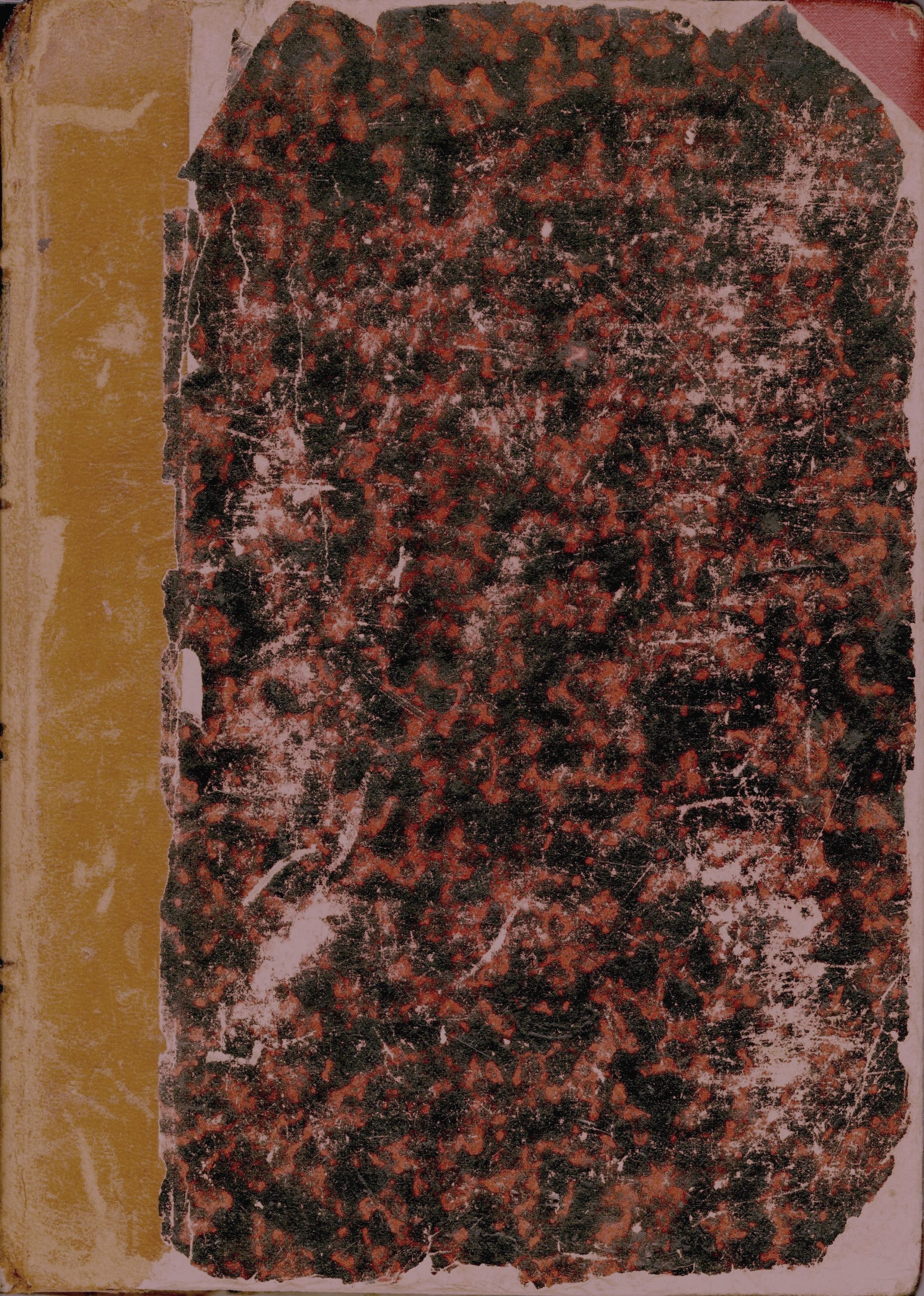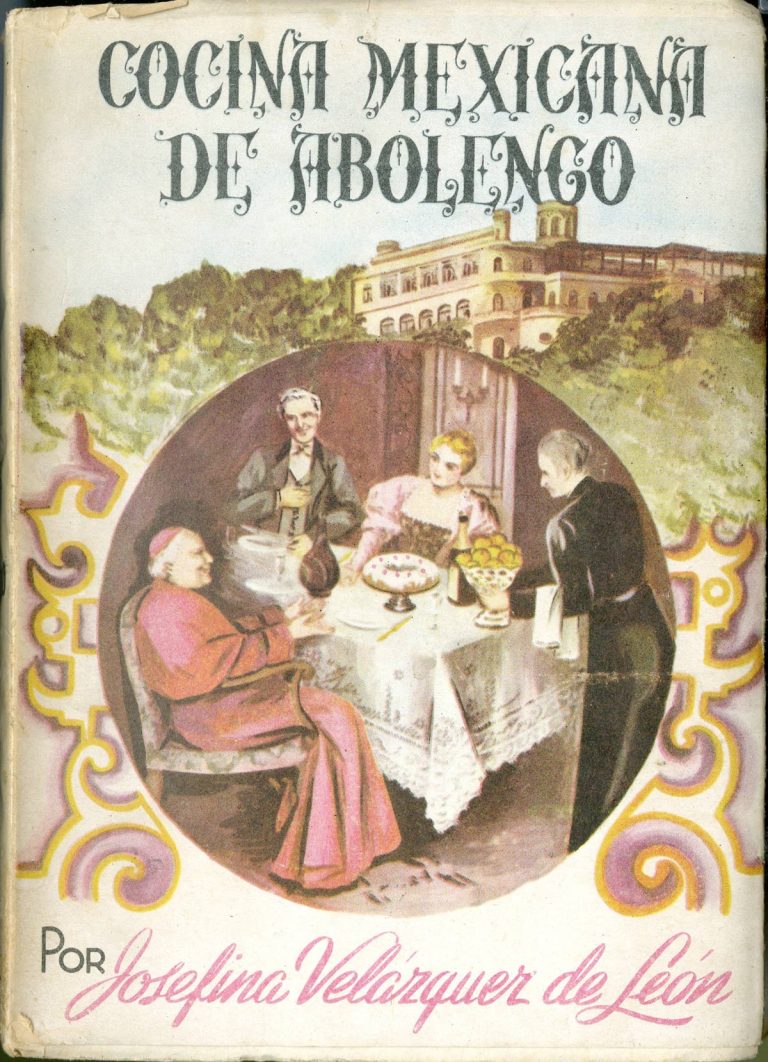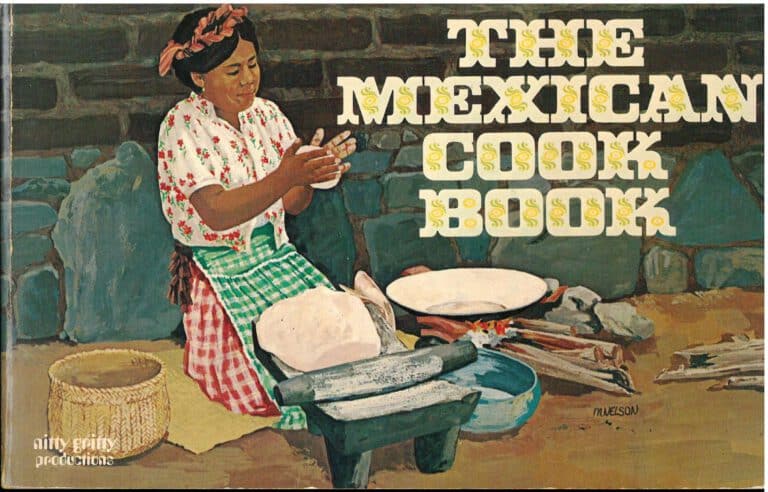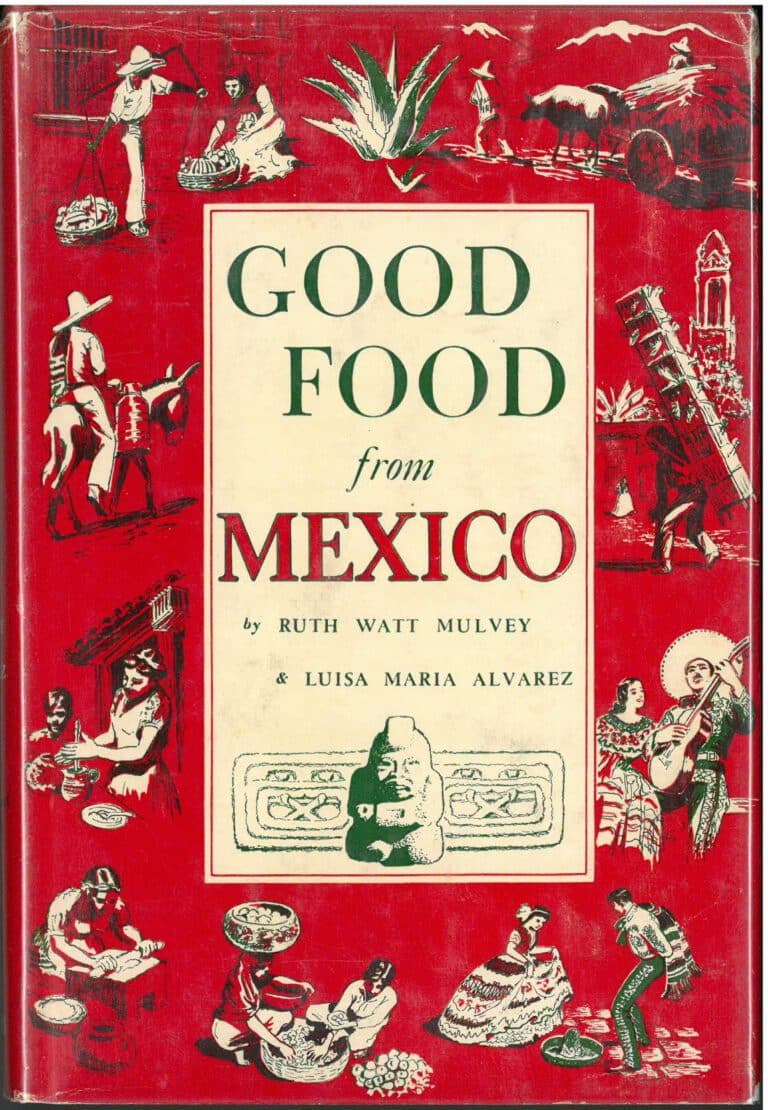Mole Amarillo, Mole Chichilo y Mole del Día 1896 (Yellow, Chichilo and Day Mole)

Torres de Rubio, Vicenta. Cocina Michoacana (Zamora : Imprenta Moderna, 1896). [TX716.M4 T67 1896].
Last week we introduced Vicenta Torres de Rubio’s landmark regional cookbook Cocina Michoacana. Today, we take a closer look at the chapter Mole, Clemole, Pipian, y Mancha-Manteles / Mole and related dishes with sauces.
Within each chapter of this cookbook, recipes are organized alphabetically and (as usual in the 19th century) presented in paragraphs (rather than today’s usual lists of ingredients and steps). There is quite a variety in the degree of detail Torres’ provides.
Some recipes are very short and vague, such as this one:
Mole Amarillo (194)
Se coje chile amarillo remojado, una cabeza de ajo asada y tomate cocido; se muele todo, se le pone la carne que se quiera, hejotes ó calabacitas y epazote y se sazona.
Take soaked yellow chiles, a head of roasted garlic, and cooked tomatillos; grind everything together; and put the mixture on whatever meat you wish. Add hejotes (probably ejotes, meaning green beans), zucchini, and epazote, and season to taste.
Or this one:
Mole Chichilo (195)
Chile mulato desvenado y tostado, tomate cocido y ajo crudo; se muele y fríe, se le ponen una ó dos hojas de aguacate y carne de cerdo.
Seed and roast chile mulato. Grind with cooked tomatillos and raw garlic, and allow to cool. Add one or two avocado leaves and pork.
Recipes like those above rely on what Jeffery Pilcher calls, “the common oral culture of the kitchen”[1], expecting that readers will have the knowledge and experience to correctly estimate amounts and cooking times. Other recipes are much more prolonged and specific, such as this one for Mole del Día. Although, it, too, anticipates a certain amount of background knowledge:
Mole del Día (196)
- Un guajolote de tamaño común.
- Dos codillos con carne de cerdo.
- Una y media libras de chiles molidos, mulato, Colorado y pasilla.
- Una tasa grande de tomates blancos.
- Una id., id., de pan tostado y rallado.
- Semillas de los chiles, de ajonjolí, cilantro, y calabazas; todo tostado.
- Tres tortillas dorados en manteca.
- Especias; clavo, canela, nuez moscada, poco jengibre, cilantro y unos granos de anis.
- Yerba-buena, cuatro o seis hojas.
Se cuecen en agua, con ajos y sal, el guajolote y los codillos juntos.
Limpios los chiles se procurará que no piquen y se freirán con Manteca, moliéndolos sobre su propia grasa. Nada de agua.
En crudo se molerán los tomates y se les apartarán los pellejos para darles el ultimo paso por la piedra con el pan rallado que se mezclará con las tortillas de que se habló y las hojas de yerba-buena.
En morterito ó almirez se harán los polvos de las semillas y especias, dorados aquellas y éstas en crudo.
A una Buena cacerola, bastante en capacidad, se lleva media libra de Manteca, se deja tomar punto y se fríe primero el chile; luego el tomate con el pan y tortillas molidas, y por ultimo las especias.
Se sirven caldo del guajolote y agua calientes, y con la sal correspondiente los otros aditamentos expresados; al romper el hervor se sirve en racioncillas el ave, sus menudencias y el codillo también fraccionado.
Mole of the Day
- A normal sized turkey.
- Two pork knuckles.
- One and a half pounds of ground chiles, mulatto, Colorado and pasilla.
Librarian’s Note: It is not completely clear whether this refers to 1 ½ pounds of each type of chile or 1 ½ pounds altogether. Based on proportions though, I would assume 1 ½ pounds altogether. - A large measure of white tomatillos.
Librarian’s note: Although usually referring to tomatillos, translating “tomates” always involves some uncertainty, as it can sometimes refer to tomatoes. There are white varieties of tomatoes; I am not aware of white tomatillos, but they may very well exist. In any case, using any variety of tomatillo or tomato should produce tasty results. - A id., id., toasted bread crumbs.
Librarian’s note: “id., id. May be an abbreviation for “idem,” used sometimes in the same way as “i.e.” However, I am unsure of its use here, as this translation does not appear to make sense in context. - •chile seeds, sesame seeds, cumin seeds, and pumpkins seeds, all toasted.
- Three tortillas fried in lard till golden.
- Spices, cloves, cinnamon, nutmeg, a little ginger, coriander and grains of anise.
- Yerba buena, four or six leaves.
Boil the turkey and pork knuckles together in water with garlic and salt.
Clean the chiles and fry in lard, grinding them with the fat used to fry them. Do not add water.
Remove the husks of the tomatillos and grind them raw. Then grind with the breadcrumbs, tortillas, and yerba buena.
With a mortar and pestle, grind the seeds and spices, both those toasted and those used raw.
Heat half a pound of lard in a large pan. Add the chile mixture and fry; then the tomatillo, bread, and tortilla mixture; and finally the spices.
Serve the broth in which the turkey was cooked hot, with salt and other flavorings. When it comes to a boil, serve with portions of the bird, its giblets, and the pork knuckles.
[1] Jeffrey Pilcher, Que Vivan los Tamales!: Food and the Making of Mexican Identity(Albuquerque: University of New Mexico Press, 1998), 67.






